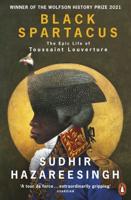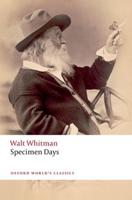Publisher's Synopsis
*Includes pictures
*Includes contemporary accounts
*Includes online resources and a bibliography for further reading
By the time the Revolutionary War started, military confrontations between the world powers had become so common that combat was raised to the status of a fine art, consuming a large portion of time for adolescent males in training and comprising a sizeable component of the economy. Weaponry was developed to a degree of quality not accessible to most North Americans, and European aristocrats were reared in the mastery of swordsmanship with an emphasis on the saber for military use. Likewise, the cavalry, buoyed by a tradition of expert horsemanship and saddle-based combat, was a fighting force largely beyond reach for colonists, which meant that fighting on horses was an undeveloped practice in the fledgling Continental Army, and the American military did not yet fully comprehend the value of cavalry units. Few sword masters were to find their way to North America in time for the war, and the typical American musket was a fair hunting weapon rather than a military one. Even the foot soldier knew little of European military discipline.
German participation is historically noted for the Hessians, mercenary soldiers recruited in whole companies by Britain, whose standing army featured relatively low numbers when the American Revolution began. However, other Germans noted for their mastery of the science of war sided with the colonies, and one of them was Baron Johann von de Kalb, a mentor and elder colleague of the legendary Marquis de Lafayette. Considered by some to be far too old for one attempting to rejuvenate the career of a soldier, de Kalb was a keen student of war with a steady mind and hand. Once able to prove his worth to the Continental Congress, he rose immediately to the rank of Brigadier General under George Washington, served with distinction, and died heroically in the Battle of Camden, a battle in the South that foretold the eventual surrender of Lord Cornwallis at Yorktown.
For professionals of a European country to graft themselves to the culture of another was not so unusual in the 18th century, whether in the arts, government, or the military, but de Kalb was distinctly unique from a young age as a German with a strong Francophile bent. As a youth, he served in a German infantry division training and fighting for the French king, and after two grisly wars that left no nation in Europe untouched, he threw off his anticipated retirement and turned toward the American Revolution against Britain. By the time of his participation in the American theater, de Kalb was in his 50s, but given that he was still physically strong and well-trained in combat, he took up the fight against Britain as a matter of personal rejuvenation, on both a political and emotional level. In his efforts on behalf of the colonies, he proved himself to possess extraordinary vitality, regardless of age, and his legacy, much like that of his protége, remains a strong one. To this day, he is commemorated by numerous communities and counties across the present-day U.S.
Though he hailed from dubious lineage, Baron von Steuben enjoyed the full title of Baron Friedrich Wilhelm Rudolf Gerhard Augustin von Steuben, and when he came to fight in the Revolution, his purportedly lustrous military credentials could not be accurately verified by the American liaisons who were in contact with him. Like the Marquis de Lafayette and Baron de Kalb before him, von Steuben came to Washington's army via the recommendation of Benjamin Franklin, who hoped to use their appointments to curry political favor internationally. Furthermore, the letters sent with von Steuben to America underwent such upgrades of prestige and glamorization that his introduction was essentially an intentional deceit on the parts of the Americans in France.









